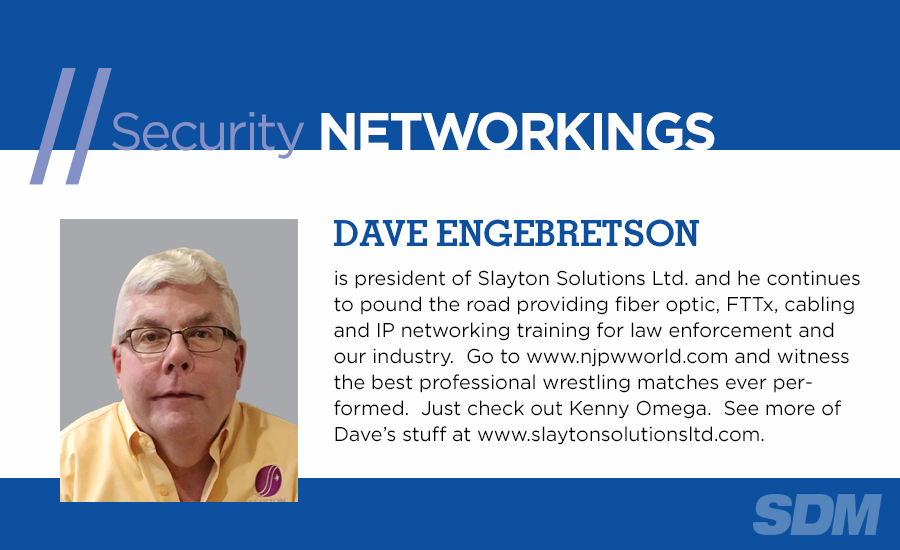HAVE YOU BEEN WATCHING THE NEWS LATELY? If you’re like me, you’ve gotten sick of watching bad news regarding the COVID-19 outbreak, mass shootings and other depressing events that seem to be regularly occurring in our world.
There are two pieces of bad news that will directly affect low-voltage installation contractors. The price of copper was about $2.10 per pound back in March 2020 as the COVID-19 crisis started to crest. In May 2021, the price of copper surpassed its all-time high, totaling $4.75 per pound. As you can imagine, with the more than doubling of copper costs, the prices of all types of cables from coax to UTP and others will be raised as manufacturers attempt to retain profitability in their cable sales.
But wait — there’s more bad news. Remember the Big Freeze that blanketed Texas back in February? Along with some insane power costs for consumers, some of the major manufacturers’ factories that produce the resins used in cable jacketing were damaged, stopping up to 80 percent of U.S. manufacturing of these critical components. As you can expect, the shortage of jacketing materials will also raise the prices of cabling. These vendors are now providing their raw material shipments via “allocation.” This means that if cable manufacturer A has a contract to receive 100,000 pounds of resin X per month, they may instead be getting 10,000 pounds, and it might not be delivered monthly. While most cable manufacturers have established contracts with raw material vendors for scheduled shipments, the material vendors are put into a “force majeure” situation where due to natural causes (storms, COVID-19 breakouts) they cannot meet their contracted commitments, at least for a while.
These raw material cost increases are also affecting the manufacturers of cabinets, racks and other hardware components. So, the price of many of the components needed for a system install are going up, and who knows when they will recede.
But can’t the vendors get what they need from overseas sources? When COVID-19 hit, many of the container manufacturers cut back production due to the drop in demand. Now there are dramatic problems in the container shipment supply line, with shortages of containers, dock workers, dock space and increased demand as economies restart. All of this has increased the cost to ship a container west to east across the Pacific by 500 percent, or roughly $8,000 per 40-foot container. And with this problem, manufacturers who used to be able to order a shipment right away are waiting their turn to get a container to ship their materials. In some cases, cable and material orders that normally would take three months to get produced and shipped from Asia to Long Beach Harbor are taking up to seven months for delivery. Once they land, there’s also a shortage of long-haul trucks to bring the containers to their destination.
And it’s not just cable that should concern our industry. Many electronic components used in our systems, like motion detectors, may right now be sitting in a boat outside the Los Angeles harbor, waiting their turn to deliver (just Google “waiting container ships” and you’ll get the picture.) So, it’s possible that your distributor may not be able to deliver the components you sold for a job as they just aren’t available until the “ship comes in.”
How can low-voltage contractors weather this cost and delivery storm that is likely to continue for a year or more? David Coleman of Paige Datacom, manufacturer of the “game changer” UTP cable that is approved for up to 200-meter Ethernet communications, expressed a number of concerns and methods by which contractors can protect themselves. Planning as far in advance as possible for installations to be completed, quoting prices for systems that can be adjusted if the costs of cabling and components take a big jump, and making arrangements with distributors and product manufacturers to hopefully lock in product deliveries will all be important steps to protect your business.
While business may have stalled for many last year, this year seems to be a time of rapid growth for the security industry. Those who weathered the storm of limited demand last year are faced with changing their tactics this year as the winds seem to be shifting to a storm of limited supply. A quickly growing business with rising costs and unpredictable delivery could be enough to cause a business to choke if not managed correctly. Smart dealers will be looking at their one- and two-year projected needs for cable and devices, and may place their orders now. It can be assumed that the prices aren’t going to go down anytime soon.
Special thanks to cable industry veteran, David Coleman for his insights on this topic.








